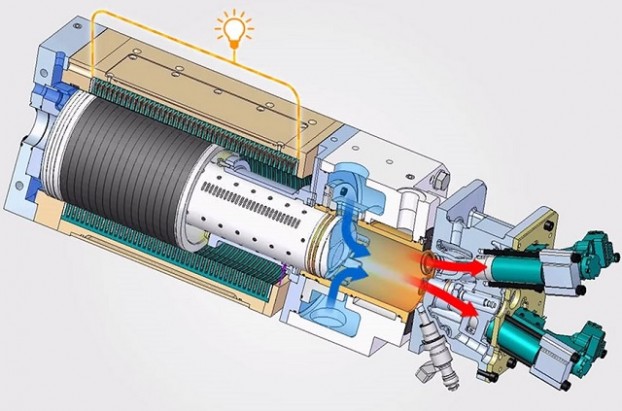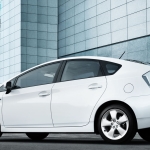Think of the familiar Otto cycle's steady rhythm: suck, squeeze, bang, blow. For nearly a century, this sequence has been the backbone of modern engines. Despite significant advancements in fuel management systems and component efficiency, the four-stroke Otto cycle remains unchanged. However, its reign hasn't gone unchallenged. Toyota's Atkinson cycle hybrid engines, for instance, have proven successful when combined with hybrid batteries and powertrains. Mazda's Wankel rotary engines have also captured the hearts of enthusiasts since their introduction in the late '60s. Recently, Toyota introduced another contender to the venerable Otto-cycle internal combustion engine—the Free Piston Engine Linear Generator (FPEG). This innovative design aims to replace conventional small gasoline engines in hybrids with compact, single-purpose gasoline-powered electrical generators. The potential applications for such a system could revolutionize the way we think about hybrid vehicles. Toyota FPEG Engine The name Free Piston Engine Linear Generator (FPEG) might sound complex, but the underlying principle is surprisingly straightforward. Imagine a long, sealed cylinder housing a double-sided magnetic piston. Each end of the cylinder contains a combustion chamber, and surrounding the cylinder are electrical coils at both ends. As one combustion chamber ignites, it draws in and compresses the air-fuel mixture in the opposite chamber, causing the double-sided piston to move rapidly back and forth. This linear motion generates electricity directly. (For reference, the accompanying video showcases a single-sided version of the FPEG. Picture two of these units working together to share the same piston for a more complete system.) Without the need for a crankshaft, multiple cylinders, or complex valve trains, the FPEG is simpler and more efficient. Although it's too early to predict exact efficiency gains, it’s reasonable to assume that the FPEG will surpass current engine standards. While the FPEG doesn’t produce much torque, its ability to generate electricity makes it an ideal companion for hybrid vehicles. Don’t expect to see this technology in a production vehicle anytime soon, but Toyota envisions the FPEG replacing traditional Atkinson cycle engines in models like the Prius. It’s still unclear whether the FPEG will ever reach consumer markets. On one hand, its potential for efficiency is impressive. On the other, it represents a radical departure from established solutions. Still, if Toyota manages to bring the FPEG to life affordably, it would be compact, efficient, and durable—a winning combination for small engines. Perhaps the FPEG will serve as a backup generator for plug-in electric vehicles or even act as the primary power source for future battery-electric vehicles. One thing is certain: if anyone can make the FPEG a reality, it’s Toyota. After all, many doubted the viability of gas-electric hybrids until the Prius proved otherwise. Sustainable Skincare Packaging Sustainable skincare packaging refers to packaging materials and designs that are environmentally friendly, socially responsible, and economically viable. The beauty industry is notorious for its excessive use of plastic packaging, which is harmful to the environment. Sustainable skincare packaging aims to reduce the environmental impact of the beauty industry by using eco-friendly materials, reducing waste, and promoting recycling.
Some examples of sustainable skincare packaging include:
Sustainable Skincare Packaging,Cosmetic Pipe,Squeeze Tube,Laminated Tube Suzhou Sanxin Tube Co.,Ltd. , https://www.packagingest.com
The Promise of the FPEG Concept
Is the FPEG Ready for Prime Time?
Related Posts
2. Biodegradable materials: Biodegradable materials, such as bamboo, paper, and cornstarch, are becoming increasingly popular in the beauty industry. These materials break down naturally, reducing waste and pollution.
3. Refillable containers: Refillable containers are an excellent way to reduce waste and promote sustainability. Many skincare brands are now offering refillable options for their products, reducing the need for new packaging.
4. Recyclable packaging: Skincare brands are now using recyclable materials, such as aluminum and PET plastic, for their packaging. These materials can be recycled multiple times, reducing waste and promoting sustainability.
Overall, sustainable skincare packaging is an important step towards a more environmentally conscious beauty industry. By choosing sustainable packaging options, we can reduce waste, protect the environment, and promote a more sustainable future.
 2014 Toyota Tundra SR5 Is A Show Stopper
2014 Toyota Tundra SR5 Is A Show Stopper
 President Toyoda’s Favorite Non-Toyota Vehicles
President Toyoda’s Favorite Non-Toyota Vehicles
 Cue The Dramatic Music…
Cue The Dramatic Music…
 Battery Production Change
Battery Production Change
 Toyota Responds Swiftly To Brake Issues
Toyota Responds Swiftly To Brake Issues
 Toyota Faces Problems With Soviet Patent-Holder
Toyota Faces Problems With Soviet Patent-Holder